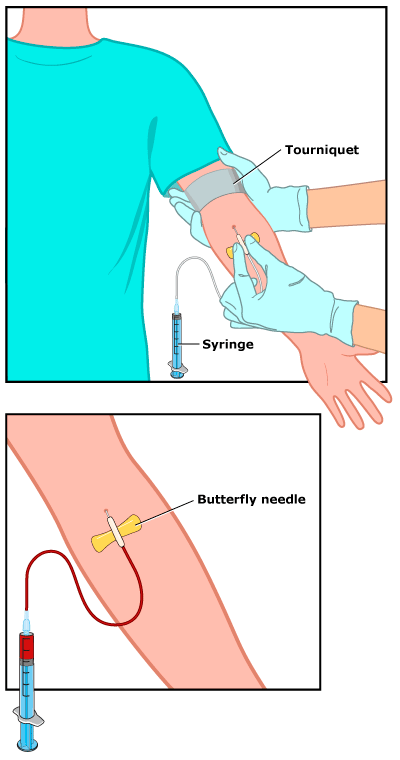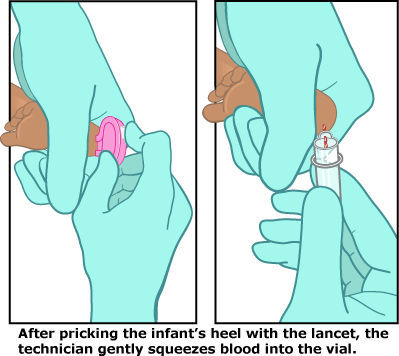Blood Test: Immunoglobulins (IgA, IgG, IgM)
What Is a Blood Test?
A blood test is when a blood sample is tested in a lab. Doctors order blood tests to check things such as the levels of glucose, hemoglobin, or white blood cells. This can help them find problems like a disease or medical condition. Sometimes, blood tests can help them see how well an organ (such as the liver or kidneys) is working.
What Is an Immunoglobulin Test?
An immunoglobulin (im-yeh-no-GLOB-yeh-len) test measures the level of types of antibodies in the blood. The immune system makes antibodies to protect the body from bacteria, viruses, and allergens.
The body makes different antibodies, or immunoglobulins, to fight different things. For example, the antibody for chickenpox isn't the same as the antibody for mononucleosis. Sometimes, the body may even mistakenly make antibodies against itself, treating healthy organs and tissues like foreign invaders. This is called an autoimmune disease.
The types of antibodies are:
- Immunoglobulin A (IgA): It's found in the linings of the respiratory tract and digestive system, as well as in saliva (spit), tears, and breast milk.
- Immunoglobulin G (IgG): This is the most common antibody. It's in blood and other body fluids, and protects against bacterial and viral infections. IgG can take time to form after an infection or immunization.
- Immunoglobulin M (IgM): Found mainly in blood and lymph fluid, this is the first antibody the body makes when it fights a new infection.
- Immunoglobulin E (IgE): Normally found in small amounts in the blood. There may be higher amounts when the body overreacts to allergens or is fighting an infection from a parasite.
- Immunoglobulin D (IgD): This is the least understood antibody, with only small amounts in the blood.
Why Are Immunoglobulin Tests Done?
Doctors may check immunoglobulin levels to see if a person has an infection or is protected from getting an infection (is immune to it). Doctors also use immunoglobulin tests to help diagnose immunodeficiencies (when the immune system isn't working as it should). Doctors may suspect an immunodeficiency in a child who gets a lot of infections or unusual infections.
The tests might be done as part of an evaluation for allergies or autoimmune conditions such as juvenile idiopathic arthritis, lupus, and celiac disease.
How Should We Prepare for an Immunoglobulin Test?
Kids can eat and drink normally unless also getting other tests that require fasting beforehand. Tell your doctor about any medicines your child takes because some drugs might affect the test results.
Wearing a T-shirt or short-sleeved shirt for the test can make things easier for your child, and you also can bring along a toy or book as a distraction.
How Is an Immunoglobulin Test Done?
Most blood tests take a small amount of blood from a vein. To do that, a health professional will:
- Clean the skin.
- Put an elastic band (tourniquet) above the area to get the veins to swell with blood.
- Insert a needle into a vein (usually in the arm inside of the elbow or on the back of the hand).
- Pull the blood sample into a vial or syringe.
- Take off the elastic band and remove the needle from the vein.
Sometimes immunoglobulin tests can be done with a "fingerstick" test. The health professional will clean your child's finger, then prick the tip of it with a tiny needle (or lancet) to collect the blood.
In babies, blood draws are sometimes done as a "heel stick collection." After cleaning the area, the health professional will prick your baby's heel with a tiny needle (or lancet) to collect a small sample of blood.
Collecting a sample of blood is only temporarily uncomfortable and can feel like a quick pinprick.


Can I Stay With My Child During an Immunoglobulin Test?
Parents usually can stay with their child during a blood test. Encourage your child to relax and stay still because tensing muscles can make it harder to draw blood. Your child might want to look away when the needle is inserted and the blood is collected. Help your child to relax by taking slow deep breaths or singing a favorite song.
How Long Does an Immunoglobulin Test Take?
Most blood tests take just a few minutes. Sometimes, it can be hard to find a vein, so the health professional may need to try more than once.
What Happens After an Immunoglobulin Test?
The health professional will remove the elastic band and the needle and cover the area with cotton or a bandage to stop the bleeding. Afterward, there may be some mild bruising, which should go away in a few days.
When Are Immunoglobulin Test Results Ready?
It may take a few days for the results to be available. If the test results show signs of a problem, the doctor might order other tests to figure out what the problem is and how to treat it.
Are There Any Risks From Immunoglobulin Tests?
An immunoglobulin test is a safe procedure with minimal risks. Some kids might feel faint or lightheaded from the test. A few kids and teens have a strong fear of needles. If your child is anxious, talk with the doctor before the test about ways to make it easier.
A small bruise or mild soreness around the blood test site is common and can last for a few days. Get medical care for your child if the discomfort gets worse or lasts longer.
If you have questions about the immunoglobulin test, speak with your doctor or the health professional doing the blood draw.
